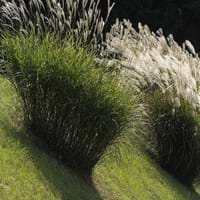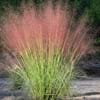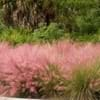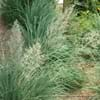Life Span
Perennial
Perennial
Type
Grass
Bulb or Corm or Tuber
Origin
Hybrid origin
South America
Types
Not Avaialble
Pamianthe cardenasii , Pamianthe parviflora , Pamianthe peruviana
Number of Varieties
Not Available
Habitat
Lake Sides, savannahs
All sorts of environments
USDA Hardiness Zone
5-9
8-10
Sunset Zone
1a, 1b, 2a, 3a, 3b, 4, 5, 6, 7, 8, 9, 10, 11, 12, 13, 14, 15, 16, 17, 18, 19, 20, 21, 22, 23, 24
21,22
Habit
Clump-Forming
Clump-Forming
Flower Color
Not Available
White
Flower Color Modifier
Bicolor
Bicolor
Fruit Color
Not Available
Green
Leaf Color in Spring
Green
Dark Green
Leaf Color in Summer
Light Green
Light Green
Leaf Color in Fall
Green, Purple, Burgundy, Bronze
Several shades of Green
Leaf Color in Winter
Not Available
Light Green
Leaf Shape
Grass like
Strap shaped
Plant Season
Summer, Fall
Spring, Summer, Fall
Sunlight
Full Sun, Partial Sun
Partial Sun, Partial shade
Type of Soil
Clay, Loam, Sand
Loam, Sand
The pH of Soil
Acidic, Neutral
Acidic, Neutral, Alkaline
Soil Drainage
Average
Average
Bloom Time
Early Summer, Summer, Late Summer, Early Fall
Spring, Late Spring, Early Summer, Summer, Late Summer
Tolerances
Drought
Drought
Where to Plant?
Ground
Ground, Pot
How to Plant?
Rhizome division
Offsets
Plant Maintenance
Medium
Medium
Watering Requirements
Average Water Needs, Do Not over Water
Keep the ground moist but not water-logged
In Summer
Lots of watering
Lots of watering
In Spring
Moderate
Moderate
In Winter
Average Water
Average Water
Soil pH
Acidic, Neutral
Acidic, Neutral, Alkaline
Soil Type
Clay, Loam, Sand
Loam, Sand
Soil Drainage Capacity
Average
Average
Sun Exposure
Full Sun, Partial Sun
Partial Sun, Partial shade
Pruning
Remove damaged leaves, Remove dead branches, Remove dead leaves
Pinch or prune as they grow to promote branching and bushiness, Remove damaged leaves, Remove dead branches, Remove dead leaves, Requires little pruning
Fertilizers
All-Purpose Liquid Fertilizer
All-Purpose Liquid Fertilizer, High phosphorus
Pests and Diseases
No serious insect or disease problems
Leaf spot, Mosaic viruses
Plant Tolerance
Drought
Drought
Flower Petal Number
Single
Single
Foliage Texture
Coarse
Coarse
Foliage Sheen
Glossy
Glossy
Attracts
Crickets
Bees, Birds, Bumblebees, Butterflies, Hummingbirds, pollinators
Allergy
Not Available
Unknown
Aesthetic Uses
bank hedging, Mixed Border, Showy Purposes
Beautification, Bouquets, Ornamental use, Showy Purposes
Beauty Benefits
Not Available
No Beauty Benefits
Environmental Uses
Air purification
Air purification
Medicinal Uses
No Medicinal Use
No Medicinal Use
Part of Plant Used
Whole plant
Not Available
Other Uses
Screen, Used as Biofuel, Used for making hedge
Beneficial species for attracting pollinators, Decoration Purposes
Used As Indoor Plant
No
No
Used As Outdoor Plant
Yes
Yes
Garden Design
Hedges, Mixed Border, Screening / Wind Break
Bog Garden, Container, Feature Plant, Foundation, Mixed Border, Water Gardens
Botanical Name
MISCANTHUS Giganteus
HYMENOCALLIS longipetala
Common Name
Giant Silvergrass
Peruvian Daffodil, Spiderlily
In Hindi
Giant Silvergrass
peruvian daffodil
In German
Riesenschilf
peruvian daffodil
In French
géant silvergrass
peruvian daffodil
In Spanish
Giant Silvergrass
Pamianthe
In Greek
Giant Silvergrass
peruvian daffodil
In Portuguese
Silvergrass gigante
peruvian daffodil
In Polish
Giant Silvergrass
peruvian daffodil
In Latin
Giant Silvergrass
peruvian daffodil
Phylum
Magnoliophyta
Magnoliophyta
Class
Lilopsida
Liliopsida
Order
Cyperales
Asparagales
Family
Poaceae
Amaryllidaceae
Genus
Miscanthus
Pamianthe
Clade
Angiosperms, Commelinids, Monocots
Angiosperms, Monocots
Tribe
Andropogoneae
Clinantheae
Subfamily
Panicoideae
Amaryllidoideae
Number of Species
Not Available
Not Available
Season and Care of Giant Silvergrass and Peruvian Daffodil
Season and care of Giant Silvergrass and Peruvian Daffodil is important to know. While considering everything about Giant Silvergrass and Peruvian Daffodil Care, growing season is an essential factor. Giant Silvergrass season is Summer and Fall and Peruvian Daffodil season is Summer and Fall. The type of soil for Giant Silvergrass is Clay, Loam, Sand and for Peruvian Daffodil is Loam, Sand while the PH of soil for Giant Silvergrass is Acidic, Neutral and for Peruvian Daffodil is Acidic, Neutral, Alkaline.
Giant Silvergrass and Peruvian Daffodil Physical Information
Giant Silvergrass and Peruvian Daffodil physical information is very important for comparison. Giant Silvergrass height is 240.00 cm and width 120.00 cm whereas Peruvian Daffodil height is 61.00 cm and width 61.00 cm. The color specification of Giant Silvergrass and Peruvian Daffodil are as follows:
Giant Silvergrass flower color: Not Available
Giant Silvergrass leaf color: Green
Peruvian Daffodil flower color: White
- Peruvian Daffodil leaf color: Dark Green
Care of Giant Silvergrass and Peruvian Daffodil
Care of Giant Silvergrass and Peruvian Daffodil include pruning, fertilizers, watering etc. Giant Silvergrass pruning is done Remove damaged leaves, Remove dead branches and Remove dead leaves and Peruvian Daffodil pruning is done Pinch or prune as they grow to promote branching and bushiness, Remove damaged leaves, Remove dead branches, Remove dead leaves and Requires little pruning. In summer Giant Silvergrass needs Lots of watering and in winter, it needs Average Water. Whereas, in summer Peruvian Daffodil needs Lots of watering and in winter, it needs Average Water.





